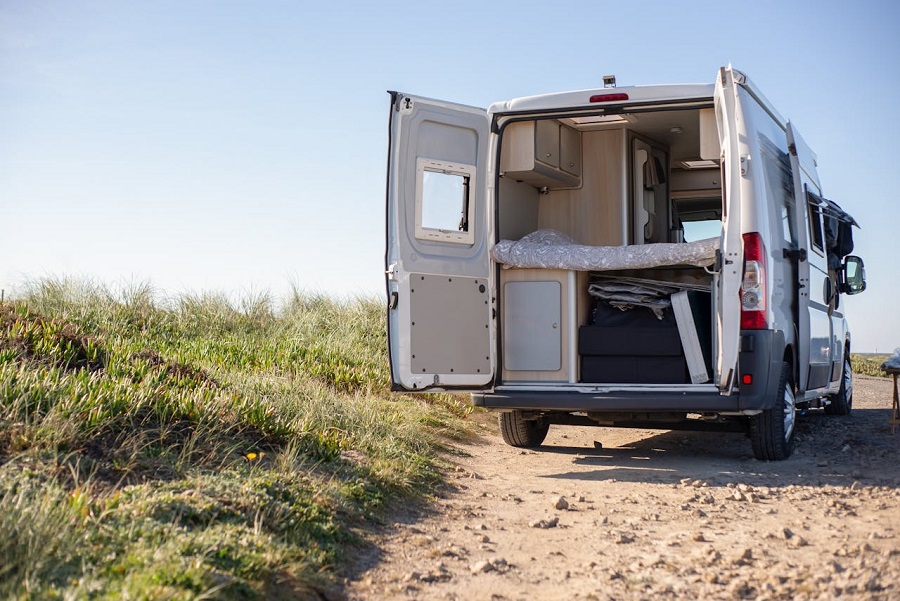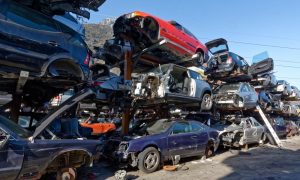
Understanding Hail Damage: The Science Behind the Impact
The Formation of Hail: What You Need to Know
Hail formation is a complex process that occurs in thunderstorms, particularly when conditions are favorable for the development of strong updrafts. These updrafts carry water droplets into extremely cold environments high in the atmosphere, where they freeze into ice. As more water is drawn into the updraft, these frozen particles can collide with supercooled water drops, adding layers of ice as they are propelled upward and downward within the storm. This process can repeat multiple times, leading to the deposition of multiple layers of ice until the hailstones become too heavy for the updraft to support. When they finally break free, these hailstones can vary vastly in size—from as small as a pea to larger than a grapefruit—making them capable of inflicting substantial damage upon impact.
How Hail Can Damage Your RV: Recognizing the Impact Zones
Your recreational vehicle (RV) is susceptible to various forms of damage during a hailstorm, notably depending on the size and density of the hailstones. Common impact zones on an RV include the roof, which often bears the brunt of the storm due to its elevation, as well as the sides, windshield, and any exposed awnings or vents. Small to medium hail may create pockmarks or dings on your vehicle’s surface, while larger stones can shatter windows or create substantial dents that may compromise the structural integrity of your RV. Furthermore, hail can tear away protective coatings, leading to rust and future maintenance issues that can be burdensome in terms of both time and cost.
Assessing the Severity: Is Your RV Repairable?
Determining whether your RV is repairable after a hail storm is crucial to making informed decisions about repairs and costs. Begin with a thorough visual inspection of all affected areas. Look for noticeable dents, cracks in windows, or ripped awnings, and assess the overall condition of the exterior paint—any cracked or chipped paint can lead to rusting if not addressed quickly. Additionally, pay careful attention to structural components such as the roof and chassis. It’s wise to document all damages with photographs, which can also assist with insurance claims. In general, if the repair costs are expected to exceed the overall value of the RV, you may need to consider whether it’s feasible to invest in repairs or if it’s time to look for a replacement. A trusted RV technician can help navigate this decision, offering insights based on experience that can save you both time and money.
DIY vs. Professional Repairs: Making the Right Choice
The Benefits of Tackling Repairs Yourself
Engaging in DIY repairs on your RV can be both rewarding and cost-effective. For many RV owners, the thrill of fixing their vehicle enhances their connection with it, turning the daunting task of repairs into a hands-on learning opportunity. Conducting your own repairs grants you full control over the process, including the choice of materials and repair methods, which can lead to a personalized touch in the final outcome. Moreover, if you possess a fair degree of mechanical skills and are comfortable using tools, taking the DIY route often results in lower financial expenditures, as you bypass labor costs associated with hiring professionals. Additionally, the knowledge and experience gained from completing repairs can serve you well in future maintenance or damage situations.
When to Call in the Experts: Finding Qualified RV Technicians
While DIY repairs can be beneficial, certain situations call for the expertise of qualified RV technicians, especially when it comes to more extensive damage or complex repairs. If your RV has sustained severe hail damage, such as significant dings to the body, shattered windows, or compromised internal fixtures, enlisting professional help may be your best option. An expert technician possesses a wealth of knowledge, specialized tools, and the necessary experience to perform repairs correctly the first time, helping to prevent future issues that could arise from improper fixes. When searching for qualified professionals, consider factors such as their certifications, customer reviews, and prior experience with hail damage. It’s important to engage someone who understands the unique build of RVs, as their repair needs often differ from conventional vehicles.
Cost Analysis: Comparing DIY Repairs with Professional Services
When contemplating RV repairs, an awareness of costs associated with both DIY and professional services is critical for budgeting and decision-making. For DIY repairs, expenses may include tools, materials, and any replacement parts necessary for restoration. Hobbyists might also spend time researching the best practices for their specific situation, which can divert focus from active repairs. Conversely, hiring a professional typically comes with a labor charge that can substantially increase the overall expenditure. On average, the cost of professional hail damage repair could range from a few hundred to thousands of dollars, depending on the extent of the damage and the technician’s experience. It’s essential to perform a cost-benefit analysis that includes estimated time, labor, material costs, and any potential impacts on the vehicle’s resale value.
Essential Tools and Materials for a Successful Repair
Your Handy Toolkit: What You’ll Need on Hand
Before embarking on RV hail damage repair, equipping yourself with the proper tools is paramount for a successful process. Few essential tools include a paintless dent removal kit, wrenches, a heat gun, adhesive pullers, and various grades of sandpaper. A level and measuring tape will help you assess structural alignment, while protective gear such as gloves and safety glasses is vital to ensure your safety throughout the repair process. Additionally, a high-quality automotive-grade paint and clear coat are crucial if you need to repaint any sections of your RV. Without these tools on hand, you may find yourself running to the hardware store repeatedly, which can delay your repairs significantly.
Choosing the Right Materials: Match Your Repairs to Your RV’s Design
Selecting compatible materials is critical for ensuring that your repairs not only look good but also retain the functional integrity of your RV. When replacing any damaged body panels or areas affected by hail, match the thickness and color as closely as possible to the existing materials. If your RV features a specific composite or fiberglass exterior, ensure you source replacements that adhere to these specifications. Furthermore, when addressing internal damage, such as insulation or interior finishes, consider using the original manufacturers’ products to sustain the value and aesthetic of your vehicle. Paying attention to these details will help maintain the functionality and appearance of your RV while also enhancing its longevity.
Safety First: Precautionary Measures During Repairs
Safety should always be a priority during any repair process, particularly when working on large vehicles such as RVs. Begin by ensuring you have ample workspace and that the area is well-lit to avoid accidents. Use appropriate lifting equipment or ramps when working beneath the vehicle, and make sure to stabilize it with wheel chocks to prevent movement. Always utilize gloves and safety goggles when handling sharp tools or chemicals. It’s also wise to read instructions or watch tutorials regarding specific repair techniques before starting any work, which can greatly reduce the likelihood of injury and enhance overall effectiveness. Remember, rushing through repairs while overlooking safety can lead to unwanted mishaps or accidents that can derail your repair efforts.
Preventative Strategies: Protecting Your RV from Future Hail Damage
Smart Parking: Finding Shelter in a Storm
One of the most straightforward yet often overlooked aspects of preventing hail damage is being strategic about where you park your RV during inclement weather. If you know a storm is approaching, seek shelter in an enclosed garage or under a large awning. Additionally, taking advantage of natural landscapes, such as parking next to large buildings or other vehicles, can provide some protection. If these options aren’t available, consider investing in portable hail protection solutions that can be quickly deployed when storms are on the horizon. Utilizing these strategies can dramatically reduce your RV’s exposure to destructive hail while providing peace of mind that you’re taking proactive steps to shield your investment.
Innovative Products: Hail Protection Solutions Worth Investing In
In today’s market, various innovative products designed to minimize hail damage to RVs are worth considering. For instance, specialized hail covers made from durable and padded materials can offer significant protection during hail storms. These covers are often lightweight and easy to install or remove, making them an excellent choice for RV owners looking for a portable solution. Additionally, hail-resistant window films can help prevent shattering, and reinforced awnings can ensure that they withstand the impact of hailstones without tearing. Implementing these protective measures not only safeguards your RV but can also save you money in potential repairs down the line.
Insurance Insights: Coverage Options to Consider
When it comes to protecting your RV against the unexpected, understanding your insurance options is crucial. Comprehensive insurance policies often cover hail damage, but it’s essential to review your policy details to confirm what scenarios are included under your coverage. Insurance deductibles can vary, and understanding the difference between a high deductible versus a low one can influence your financial obligations after an incident. Consulting with your insurance agent about additional coverage options, such as custom hail protection provisions, can further safeguard your investment and ensure you have an appropriate safety net in place. Being informed about your insurance options equips you as an RV owner to make confident decisions that align with your risk tolerance and financial situation.







